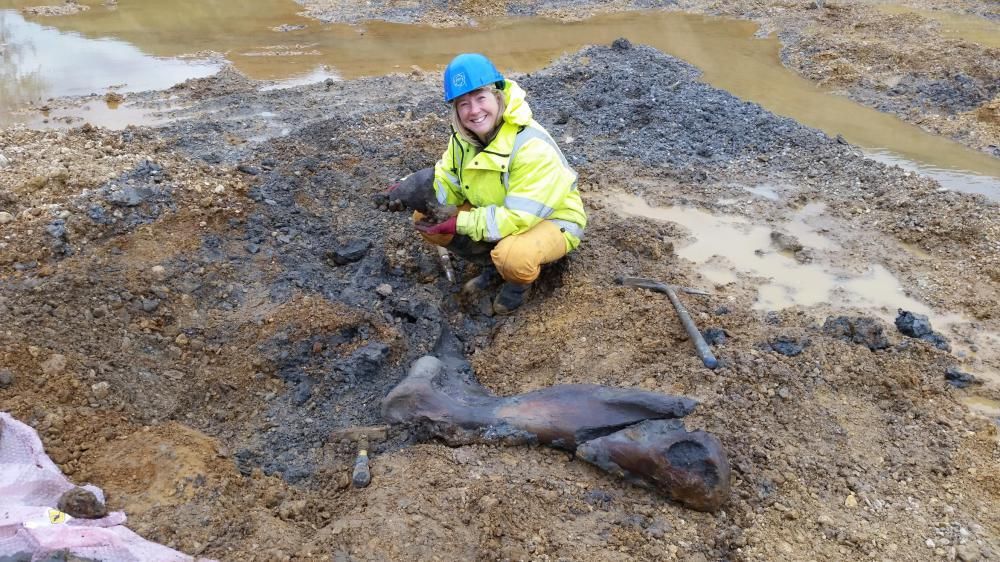A Hills Quarry Products’ quarry north of Swindon has revealed what Historic England describes as one of Britain’s most significant Ice Age discoveries in recent years.
The remains of at least five Ice Age mammoths, including two adults, two juveniles, and one infant were discovered, with a number of stone tools made by Neanderthals found nearby.
The discovery was initially made by amateur fossil hunters Sally and Neville Hollingworth, who were given permission by Hills to explore the area, and extra resources were called in.
The find became the subject of a BBC1 television documentary featuring Sir David Attenborough, Attenborough and the Mammoth Graveyard, which aired on Thursday, 30 December and is now available on iPlayer.
Peter Andrew, Group Director for Hills Quarry Products, said: “Hills has a long-standing relationship with Sally and Neville Hollingworth, and we provided substantial resources towards making sure that the area remained accessible during the various phases of excavation.
“Having worked in the Cotswold Water Park area for many years, we are very familiar with archaeological finds, but this latest discovery has turned out to be quite unique. We have been amazed by the interest in the project and the results of the research which provides an insight into Britain’s Ice Age environment and the world as it was lived in by our closest human relatives.
“We are extremely proud of the contribution we have made to bring this great story to life. It was an honour and privilege to host Sir David Attenborough during the filming of the documentary, and we cannot wait to the see the final programme to be aired.”
The research team, which attracted funding from Historic England and was led by archaeologists from DigVentures, believe that both the artefacts and mammoth remains date to around 210,000 to 220,000 years ago, towards the end of a warmer interglacial period when Britain was still occupied by Neanderthals.
Towards the end of this period, early humans abandoned Britain as temperatures plummeted and the landmass was plunged back under ice.
It is not yet clear whether the mammoths were killed by Neanderthals, or why so many were found in one place, but archaeological sites from this period are incredibly rare, as is evidence of how Neanderthals interacted with mammoths, making this discovery one that has enormous value for understanding of Neanderthal behaviour, not just in Britain but across Europe.
Additional finds at the site include:
- Remains of Steppe bison, brown bears, horse and hyena
- A number of stone tools made by Neanderthals including a hand axe and ‘scrapers’ – small flint tools that would have been used for cleaning fresh hides, as well as debris from making other unknown tools
- Seeds, pollen and plant fossils, which showed that extinct types of trees and beetles lived around the site, including the dung beetle which co-evolved with Ice Age megafauna and whose droppings the beetles used for food and shelter










Your Comments
Be the first to comment on this article
Login or Register to post a comment on this article